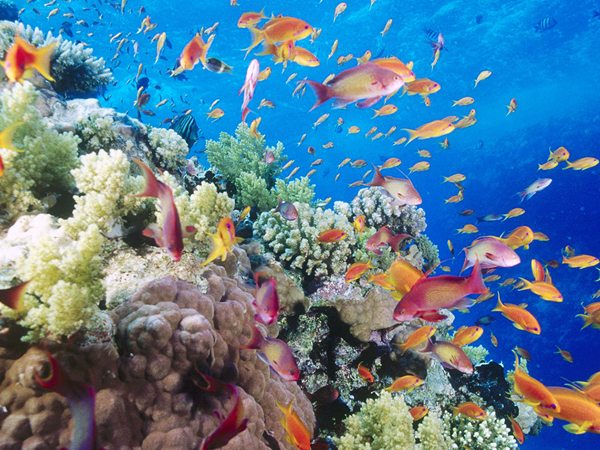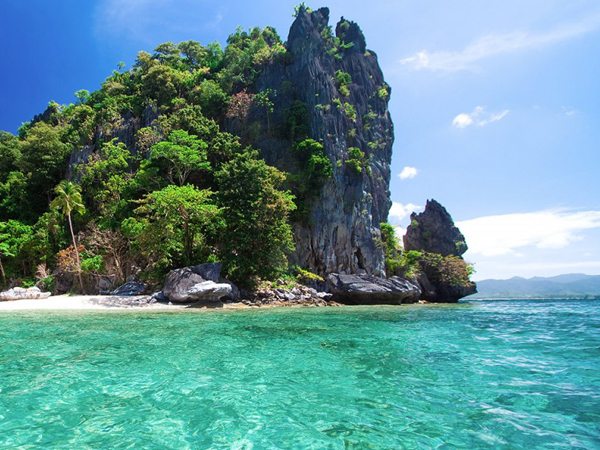Diving in Philippines
The spectacular variety of
marine life is what keeps
divers coming back.
Diving in Philippines
Being labeled as the Pearl of the Orient Sea, Philippines is one of the best diving spots in the checklists of most divers in the world. Philippines has stunning marine life, from its divine coral reefs, its fine sand texture, to its abundance in marine creatures.
Philippines is even recognized as the world’s center of marine biodiversity with its 3,172 marine and 351 freshwater species.
As you dive in the archipelago, variety of marine creatures will swim with you. Clownfish, Sweetlips, Mackarel, Parrotfish, Damselfish and Pipefish are just common in the area. The islands of the Philippines also offer experience with Lobsters, Seahorses, Crabs and Shrimps. Occasionaly, you can also sight Manta Rays, Eagle Rays, Reefsharks and Napoleon. And if you are really lucky, you might encounter Dugong, Pygmy seahorses, Napoleon Wrase, and Harlequin Shrimp.
The Philippines’ Coral Reefs are stunning and splendid at the same time. As a matter of fact, its 26000-square kilometer reef is the second largest in Southeast Asia. It recorded 915 reef fish species and more than 400 scleractinian coral species whereas 12 are endemic.
Philippines is a tropical country. From June to October, it has its rainy season. Cold air breeze starts at September and normally ends at the mid of February. As the local says, Christmas breeze is experienced at the “BER” months of year. Sun shines brightest at March through May – the best season for diving in the country.
Diving visibility depends on the weather and location. It ranges from 5 to 45 meters or 15- 150 feet. Water is normally calm, there are locations with calm water and there are some with strong currents which are good for surfers. Its temperature averages 23-30 degree Celsius or 73-86 degree Ferenheit. The country is good for beginner to advanced divers.
What makes the diving journey in the Philippines a remarkable one is its feel-like-home accommodation. Filipinos are known for their hospitable attitude, and they offer what’s best. They treat foreigners and tourists like their own relatives or even more.
Dive in the Philippines now and get ready to get hooked by this treasure-like archipelago!
| Currency: | Philippine Peso (PHP) |
| Language: | Filipino/Tagalog |
| Capital: | Manila |
| Electricity: | American-type Plug |
| Government: | Unitary presidential constitutional republic |
| Timezone: | UTC +8 |
| Calling Code: | +63 |
| Network Providers: | Smart, Globe, Sun Cellular |
| National Airline: | Philippine Airlines / Cebu Pacific Air |
Stretching around 300,000 square kilometers, Philippines is an archipelago composed of three main islands namely Luzon, Visayas and Mindanao. Luzon is the biggest island, around 105,000 square kilometers, followed by Mindanao, 95,000 square kilometers then Visayas, which is also composed of large islands.
Having an influence by its past colonizers, Philippines became rich in culture. It has a total of around 170 languages and dialects on which ‘Filipino’ is the national language. The religion in the country is mainly Christian as well as Islam in the Mindanao region.
Philippines is composed of more than 7,100 islands making the country a mega-diversed one. Also, it has more or less 52,177 described species wherein half of it can only be seen in the country.
Together with the Malay archipelago, Papua New Guinea and Australia, Philippines formed the Coral Triangle. The region has around 400-500 reef-forming corals. Seventy percent of the 2,500 species of fish homing to the Sulu-Sulawesi Sea, a 900,000-square kilometer marine eco-region, comes from the Philippines.
The country has over 7000 mountainous islands. Its rainforest, being a topical country, is well-biodiversified. There were around 3500 different species of plants and animals, including the endangered ones.
Philippines is a tropical country. From June to October, it has its rainy season. Cold air breeze starts at September and normally ends at the mid of February. As they say, Christmas breeze are experienced at the “BER” months of year. Sun shines brightest at March through May, the best season for diving in the country.
Philippines is easy to locate and to go to as many airlines offer direct flights. Ninoy Aquino International Airport is its busiest airport but it is also the best way to enter the country. If you want to avoid the terminal chaos, have a flight directly to Clark International Airport, which is accessible to the nearby countries, and have a two hour drive to get to Manila, the Philippines’ capital. Philippine Airlines is the main carrier of the country.
Travelers’ vaccination is essential to have a safe trip. And if you’replaning to visit a tropical country like Philippines, you should have your Measles-Mumps-Rubella vaccine, diphtheria-tetanus-pertussis vaccine, varicella (chickenpox) vaccine, polio vaccine and your regular flu vaccine.
Diving Destinations in Philippines

Diving in Malapascua
A Philippine island situated in the Visayan Sea, the idyllic island of Malapascua holds out a world-class diving experience that would surely entice divers to suit up and explore what is beneath the waters. Some sites offer shallow and sheltered diving, excellent for beginners or inexperienced divers. Other sites are deeper and washed by currents, some of which can be strong. These sites would be better suited to more seasoned divers.
Malapascua is a home to a huge diversity of marine life. It is well known worldwide to be the only place in the world where you can observe and dive with thresher sharks. The best time to dive with the sharks is early in the morning. It is also a great time to spot manta rays. Aside from thresher sharks, whitetip sharks and hammerhead sharks can be encountered as well. Although Malapascua is not a destination for hammerhead sharks, they can be spotted seasonally from December to April.
It is also a great place to espy rare critters and macro species like the colorful mandarin fishes, rare blue ring octopus, superb flamboyant cuttlefishes, and ornate ghost pipefishes. Nudibranchs and seahorses, including pygmy seahorses, are abundant. An array of other tropical fishes and creatures, numerous species of corals and sponges makes diving more delightful.
It is possible to dive all year round but the best visibility is from June to September.

Diving in Puerto Galera
Diving in Puerto Galera offers a great variety of dive styles and you will see a huge range of marine species as it has some of the highest biodiversity in all South East Asia. The facilities are great, and that makes diving more convenient. The currents in the area are often brisk and unpredictable which would be challenging for novice divers. Shallow or very slight current sites are always available for beginners and are ideal for training.
The caliber of the dive sites makes the experience worthwhile. There is a mixture of coral-clad reef slopes and sandy bays that reveal masses of curious critters. Puerto Galera is rich in corals, the fine hard and even the soft ones. Macro life is incredibly abundant yet the bays are bordered by deep-water reefs that are often visited by larger creatures. Nudibranchs of different kinds give life to the waters of Puerto Galera. Whitetip sharks, barracudas, tunas, and even eagle rays can be seen on selected dive sites. There are also an astounding number of wrecks that would interest most divers and serves as dwelling places for thriving fish life like batfish, angelfish, surgeonfish, butterfly fish and wrasses.
It is possible to dive all year round but the best time is from April to September. Great visibility and good sea conditions can be enjoyed during this season.

Diving in Anilao
Anilao is considered as the birthplace of Philippine scuba diving and up until now it remains the a popular dive destination for divers especially to those who are around the corners of Metro Manila, the capital region of the Philippines. The modern accommodations and facilities present in Anilao makes your stay and diving experience more comfortable and convenient.
Satisfy your thirst for unforgettable and adventurous dive and explore the vast underwater realm Anilao has to reveal. Proclaimed as the Nudibranchs Capital of the World, here you will find bountiful kinds of vibrant nudibranchs, giving brilliant colors to the waters of Anilao. A huge variety of critters like cuttlefish, shrimps, crabs can be wandered through underwater. Frogfish, pipefish and seahorses are fairly familiar in this place. Hairy frogfish, blue-ringed octopus, as well as mimic octopus, and rhinopias are not rare to spot. Mantis shrimps and several species of gobies and bobbit worms await to be explored by keen muck divers. Pelagic fishes such as barracudas, jacks and trevallies, as well as reef sharks can be located in some dive sites around Anilao. Superb hard and soft corals are of great abundance.
It is possible to dive in Anilao all year round. Even so, there are better periods than others. October to early June is the main diving season. The best months are November-December and April-May, and might as well be the peak season. Currents are gentle in most sites, ideal for training and excellent for beginners yet can be strong in some sites, perfect for experienced divers.

Diving in Moalboal
Located in the Tañon Strait, the vast majority of dive sites in Moalboal are wall dives along the coastlines. Divers enter at different point to explore different sections of the wall, and each section has its own uniqueness and striking flavor that would intrigue divers to explore the sheer walls of Moalboal.
Moalboal has a decent marine life and it is a well known place where you can witness an incredibly large volume of a school of sardines moving like fabric beneath the waters. Other than that, Moalboal is popular as well for it is a place where you can encounter and swim with whale sharks perfectly gliding and splashing the water with its shiny black tail.
Mandarin fishes are elusive in most sites but once spotted, they could as well be the top attraction considering their vibrant colors and fascinating visibility. Ornate ghost pipefish, seahorses, including pygmy seahorses, crabs like orangutan crabs, soft coral crabs can be found easily. Frogfishes in most sites are simply enormous and abundant. Turtles are regularly seen resting on the walls of Moalboal. Huge scorpion fishes can be seen on some dive sites.
Diving in Moalboal is good all year round but the peak diving months would be November and December, although the diving season is from November to May. The visibility of the waters is not much affected by the season. The waters are calmest from April to June.

Diving in Coron
Coron has been described as one of the best dive spots in the world especially for wreck diving. The shipwrecks are properly preserved and are found in different depths. Most wrecks are on shallow waters, excellent for recreational diving, and are accessible to the majority of divers of any caliber.
Most of the wrecks are enormous and offer unbounded possibilities of penetration, and even very deep penetration for the curious and experienced divers. The wrecks are home to vibrant hard and soft corals along with a great diversity of marine life. Some wrecks with shallower depths serve to lure a large volume of school and reef fish. Macro critters such as ghost pipefish and seahorses can be encountered on some sites as well. Scorpion fishes, crocodile fishes, and different kinds of colorful nudibranchs fill up most sites with vibrancy. Triggerfishes and clownfishes can also be found. Groupers and barracudas can be spotted from time to time.
Bad weather during wet season, which is from June to October can affect diving experiences and sometimes prevent any diving from happening. The best weather is usually from December to March and the visibility of the waters in that period is at its best.

Diving in Tubbataha
Tubbataha consists of 2 atolls rising in the middle of the Sulu Sea. It is a dream trip for most divers owing to the fact that Tubbataha is one of the most extraordinary dive sites in the world. The pristine conditions of this underwater jewel is because of the place’s remoteness. Being the largest and almost lone structure in the middle of a vast area of water guarantees a great influx of marine life.
The picturesque atolls of Tubbataha are some of the healthiest and host an incredible variety of critters. The underwater realm is full of life, even in the shallows. Huge areas of acropora corals and other hard corals with thousands of small colorful anthias and wrasses can be found.
Whale sharks occasionally swim by. Whitetip sharks and giant trevallies predate on other critters such as damselfish. Nurse sharks, shovelnose sharks, leopard sharks, and hammerhead sharks are common. Giant schools of barracudas, jacks, and other fishes can be encountered every so often. Oceanic manta rays can be spotted rarely as well as dogfish tunas.
The best time to dive in Tubbataha is from mid-March to early June only. It is when the sea is calm and the skies are clear and the visibility of the waters is at its best.

Diving in Bohol
Bohol offers an interesting and a great variety of diving. It is a wonderful destination for a wide diversity of sea critters and superb wall dives. Currents are usually very gentle in most sites making it ideal for training and excellent for beginners. It can be very strong on other sites, perfect for experienced divers.
Pelagic fishes like barracudas, dogtooth tunas and giant trevallies can be spotted on some sites. It is also possible to encounter schools of hammerhead sharks, and the best period for this is from December to June. Bohol features wonderful corals and you can find forests of black corals where there are a lot of garden eels, frogfishes, lionfishes, scorpionfishes and beautiful nudibranchs. Elephant ear corals and green leather corals can also be found on some sites.
Green turtles are a lot to be seen. Schools of big-mouthed mackerels passes by frequently. Triggerfishes and groupers are everywhere. Sea snakes can be found in sandy areas. Plenty of sea stars, sea cucumbers and colorful crinoids are present almost everywhere. Moray eels can be spotted as well.
It is possible to dive in Bohol all year round. There are short heavy rains from time to time but these don’t prevent any diving. The visibility is usually reduced during rainy seasons from July to September.

Diving in Subic Bay
Subic bay is easily accessed via land and air from various locations. It is very well known for its captivating wreck-diving. It is one of the best wreck-diving locations in the Philippines with wreck sites from both the American-Spanish war and WWII, suitable for beginners and experienced divers.
The marine life in Subic Bay shows a great deal of variety. Plenty of coral fish and shellfish are all over most sites. Blue spotted stingrays can also be encountered. Schools of jacks and tunas can be spotted, as well as sharks, occasionally. Octopus and turtles are also present on most sites. Some wreck sites dwell a luxuriant growth of soft corals, sponges, and crinoids. A great variety of nudibranchs enliven most sites. A coral reef that is home to some very large specimens of giant clam can also be found.
Clownfishes and angelfishes can be seen swimming in the shallows. Spotted sweetlips, as well as lobsters, swim overhead. Other types of fish like lionfish, stonefish, cuttlefish, groupers and remora, puffers and a wide variety of other critters can be enjoyed beneath the waters of Subic Bay. Yet, there is still so much to discover.
Diving in Subic Bay can be experienced all year round but the best time to dive is from February to May. The visibility varies with weather and tides but it is at its best during the dry season.

Diving in Donsol
Donsol is known for its perfect diving spot and it is renowned as the Whale Shark Capital of the World where the highest congregation of whale sharks can be found during the period of November to June. It is one of the few places in the world where whale sharks can be easily seen swimming and diving, and can be found frequently close to shore. Donsol offers several dive sites, as well as several wrecks, but are only available for technical diving.
Most sightings of manta rays and whale sharks usually occur in Manta Bowl. Hammerhead sharks and thresher sharks drop by in this site occasionally. Some sites are a mix of coral, rock and sandy bottom formations. Schools of reef fish like surgeons, fusiliers, butterfly fish, and damsels play and feed in the currents.
Whitetip sharks can be seen swimming every so often. Groupers dwell among the boulders on the sandy bottom. Schools of sardines can be encountered, and see a highway of skipjack tuna and barracuda devour their prey. Nudibranchs and spanish dancers are abundant almost everywhere, on any dive site. Schools of sweetlips can also be found on some sites.
Camouflaged creatures of the sea like the frogfish can be spotted under keen observation. Some sites contain caves underneath where lionfishes, shrimps, and lobsters have made their home. Enjoy some wall dives on some sites where you can find encrusted corals, sponges and critters like moray eels, scorpionfish and stonefish hide along the walls.
It is possible to dive in Donsol all year round but the best time is during the whale season. Whale season runs from November to June but the peak season is from February to May. It is possible to spot manta rays all year round but the best period is from December to June. The visibility depends on the tide.
